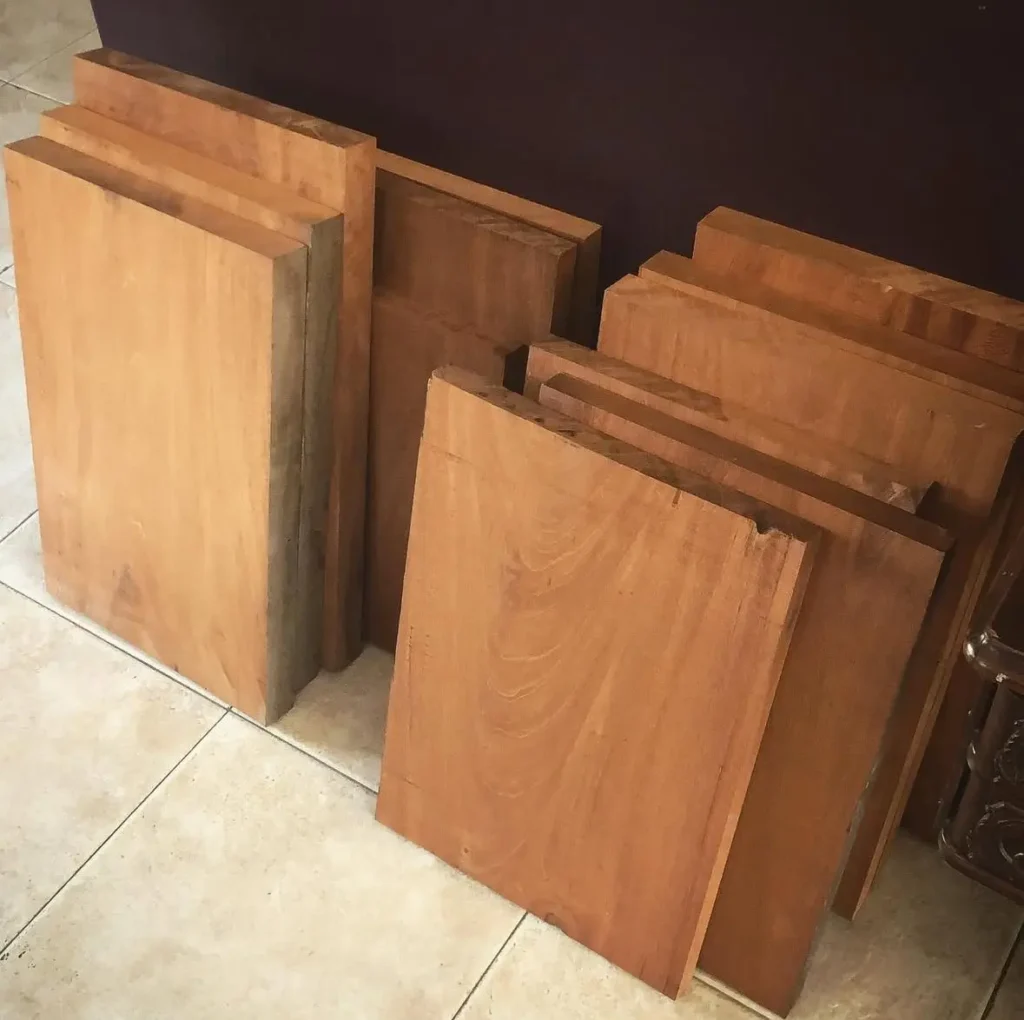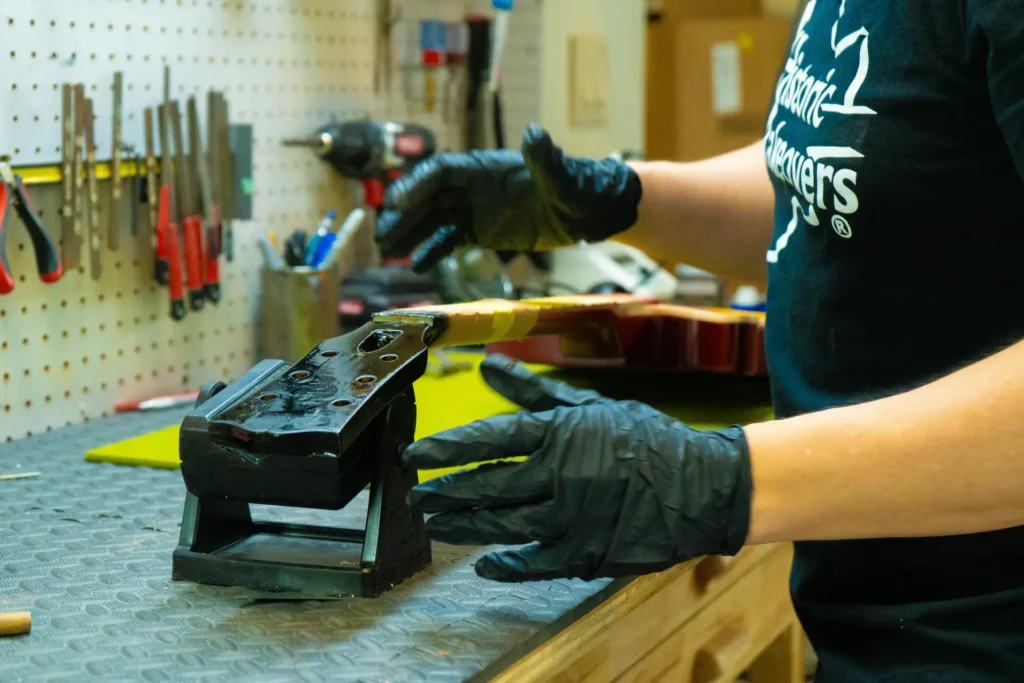When we talk about electric guitars from the 1950s and 60s, one element always stands out: mahogany.
Not just any mahogany, but genuine mahogany (Swietenia macrophylla).
This tonewood was the backbone of the golden-era Gibson guitars and is one of the main reasons behind their warm tone, rich mids and incredible resonance.
Where does “real” mahogany come from?
Many people hear “Honduran mahogany” and assume all genuine mahogany comes from Honduras. In reality, the same species grows throughout Central and South America: Honduras, Bolivia, Peru, Brazil and other regions.
What makes the difference is not just where the tree grew, but also how old the wood is and how it was dried and seasoned.
The story behind the mahogany I use
In my case, the mahogany I use today did not come from the United States. I purchased it in Argentina many years ago, from a historic stock that arrived by train from Bolivia and Peru in the 1970s. That shipment had already been air-dried for several years before it was imported, meaning the trees had been cut long before the 70s.
This means the pieces I work with today have been naturally seasoned for decades. Over so much time, the wood becomes extremely stable, lightweight, and loses all excess moisture. The result is a material that is highly resonant, with an exceptional tonal character.
Why not use modern mahogany?
Nowadays, many builders use alternative woods such as sapele or “African mahogany”. While these are fine tonewoods, they do not have the same properties or sound as genuine mahogany.
And on top of that, finding new stock of Swietenia macrophylla has become increasingly difficult due to regulations and conservation efforts.
Why the right wood matters
For me, every guitar starts long before any cutting or carving happens. It starts with wood selection.
That’s why I prefer to work with wood that has history—timbers that have been drying for decades and deliver a stability and tone that simply cannot be replicated with modern, freshly cut wood.



